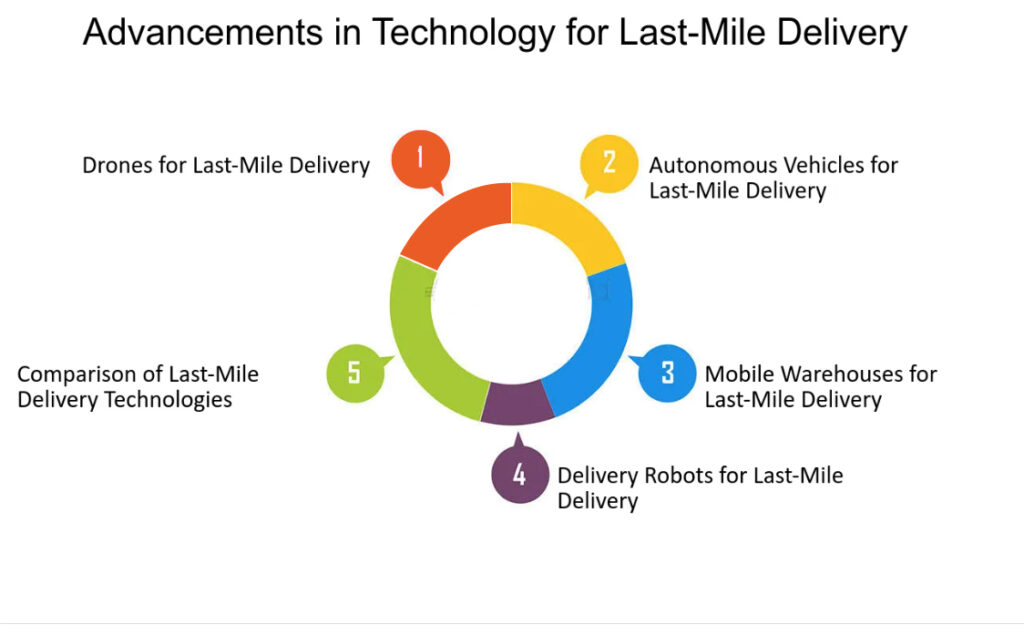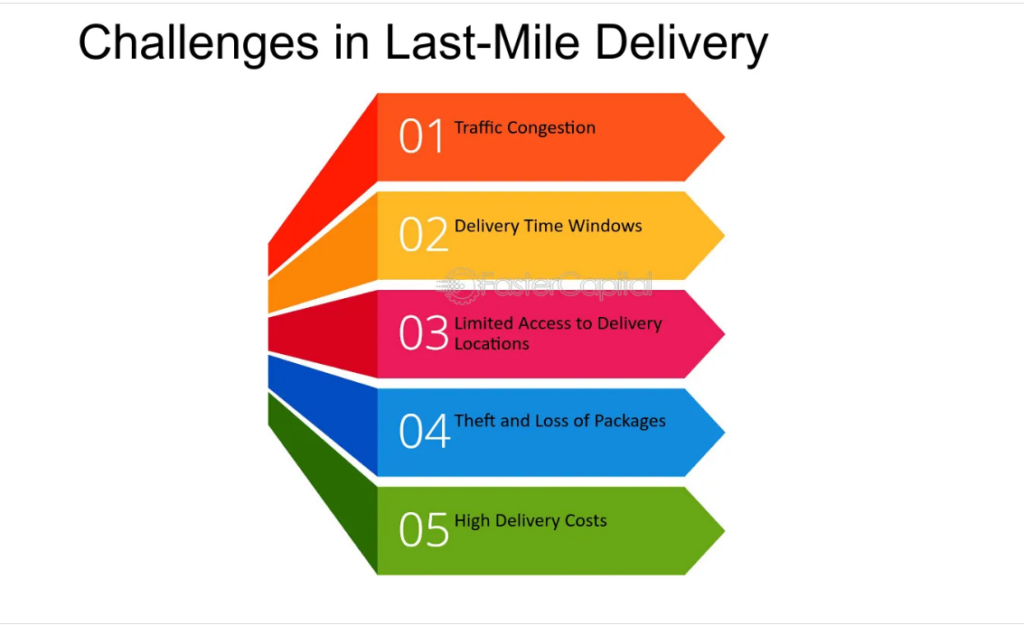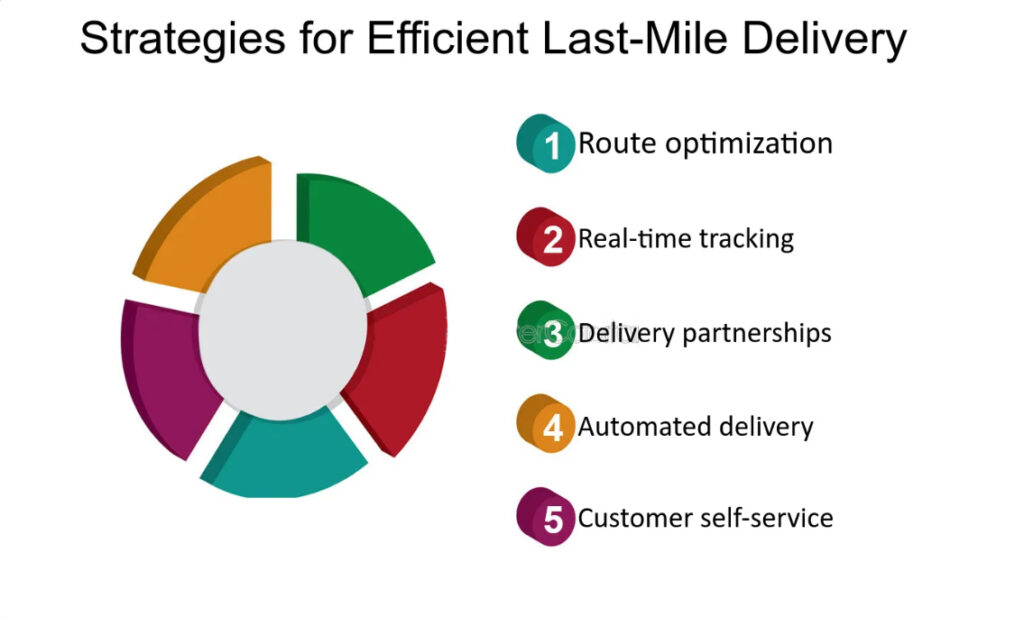Consumer Currents and Digital Drifts: April 2024’s Comprehensive Guide to E-Commerce Trends

As we progress through April 2024, the e-commerce landscape continues to evolve dynamically, influenced significantly by shifting consumer preferences and technological advancements. This update delves into the latest trends and insights that are shaping the global e-commerce sector, from consumer price sensitivity in the UAE and KSA to innovative last-mile delivery solutions and strategies for reducing product returns. Understanding these trends will be crucial for businesses aiming to stay competitive and responsive to consumer needs in a rapidly changing market.
Table of Contents
8 Consumer’s Shipping Expectation for Smooth Online Experience
A memorable shipping experience is vital to increase customer retention. The customers are now educated, and the attractive website isn’t the only thing that will convince them to come back to your online store. Any negligence in the sipping costs and arrangements can hinder their experience and can leave a poor lasting impression.
Online Shipping and Shopping on The Path of Growth
Many online stores face a threat to compete with Amazon. The shift from in-store shopping to online shopping further amplifies the threat to the retailers and puts them in competition with the e-commerce giant.
However, the silver lining in this transition is that 41% of the consumers report they shop online weekly, and 79% consumers shop online at least once a month. This shows a great growth opportunity to win online business from the clients. Here are the findings from a study conducted by SMG, a mobile research app, which gathered data from over 18,000 consumers about their expectations regarding brand shipping and delivery policies.
#1 Consumers’ Preferred Shipping Option
When surveyed about their preferred shipping options, 37% of consumers chose “standard” shipping, making it the most popular choice. The second-most popular option is the fastest free shipping available. Other options like priority, next-day, same-day, and physical pick-up are less favored, collectively chosen by only about a third of the respondents.
If a product is available on multiple websites, following factors helps the customers to choose among the retailers to buy from:
It is clear from the results that as long as standard and free shipping options are fair, the customers don’t need a myriad of shipping options.
#2 Ideal Shipping Speed

Amazon’s prime 2-day free standard shipping might be looming large in the world of e-commerce sales, it is not the expectation of all the customers. According to the survey, more than 54% of the customers are satisfied with the 5-day standard shipping for their online orders, and 67% are satisfied with 4-day standard shipping.
#3 Standard Acceptable Shipping Cost

While the shipments don’t need to be delivered at lightning speed, the cost should be low. When it comes to choosing the standard shipping, 40% of the shoppers expect the websites to ship their orders for free. If they have to pay for shipping, 52% of the customers prefer to pay less than $7 per order for their standard shipping. Similarly, if they have to pay for the expediated shipping, 52% of customers expect to pay more than $7 for the shipping.
#4 Order Minimum – Successful or Not?

The online shippers might want shipping to be free or inexpensive; however, they do not expect to get it for nothing. Only 27% of the consumers think that there should be no minimum order requirement for free standard delivery, but 61% of the overall customers think that the minimum order of $25 is a fair amount to be set as standard for free shipping.
#5 Why Do Online Shoppers Make Purchases?

In comparative online shopping, 45% of e-commerce customers consider product price as the most significant factor when choosing among multiple sellers. Other factors such as cheap shipping, delivery timeframe, and customer service are much less important, each attracting less than 17% of customers as the deciding factor.
#6 Right Time to Aware Customers on Shipping Cost

The customers usually prefer to know about the shipping costs as earlier as possible. Based on the research, only 22% of the consumers indicate they prefer to know about the shipping charges at the time of checkout. On the other hand, 74% respondents said that they would be more satisfied knowing the cost of shipping while browsing for the products.
#7 What Creates a Good Customer Experience

As shopping has shifted from physical to online environments, consumers have increasingly considered the environmental impact of their purchases. A survey reveals that 62% of consumers care about the ecological effects of their online shopping. When asked about specific environmentally friendly practices, 40% of respondents indicated that reduced packaging would most influence their shopping decisions, while 26% favored biodegradable packaging.
#8 Shipping Items Collectively

Most customers prefer qualified free standard shipping but are willing to compromise on delivery speed for environmental benefits. Only 26% of surveyed individuals expressed a preference for receiving separate shipments of multiple items from the same order to save on delivery time, indicating a general willingness to wait longer if it means fewer shipments and potentially less environmental impact.
To optimize an online shopping experience, focus on a positive final touchpoint with the customer. By incorporating insights on balancing shipping costs with customer expectations and emphasizing environmentally friendly practices, businesses can enhance customer satisfaction and promote a positive environmental impact, thereby concluding the interaction on a high note.
Moving forward, let’s explore another critical aspect of enhancing customer satisfaction: reducing e-commerce returns.
5 Proven Ways to Reduce E-Commerce Returns
While running an online business, retailers often come across a phase pf higher than usual product return rate, which is one of the biggest obstacles that e-commerce businesses face.
The returns put a lot of stress on the business owners, forcing them to increase their prices to counter the additional cost incurred. However, it is not a sustainable strategy in the long-term. Businesses need to come up with better and effective techniques to deal with product return; and customer experience optimization is one of the best ways to do that.
Here’s a list of 5 practices that can help cut down returns cost for e-commerce business.
Request and Reward Reviews
Businesses should come up with a process that encourages the customers to leave a review on the products or services provided. For instance, the customer could get a 10% discount on their next purchase or any cashback card if they leave a review. This will help and encourage them to share their views, which could assist businesses to identify any issues related to product or service.
Based on various research, product with a review has 20.3% less return rate.
Get It Right the First Time
23% of the consumers report the reason for their return to be delivery of the wrong product. This issue is faced by many ecommerce businesses occasionally; however, with the improvement in order fulfillment, the number of returns can be reduced.
Prioritizing the Packaging
Packaging differs from product to product; however, as a thumb rule, the companies should consider the product’s journey and pack them on that basis. 20% of the customers return their product because they either arrive damaged or broken.
Putting extra layers of bubble wrapping or double-lined boxes for fragile items might be a good option as most parcels are handled roughly and stacked under other boxes. Another crucial step is to label the packages and give clear handling storage and moving instructions.
Analyze the Returns and Adapt Accordingly
Record the details of all returns and organize them date wise along with the reasons. After that, analyze the numbers and see clearly what needs to be improved. Here are some of the things that you need to analyze about the product returns:
- If the customers have returned the products simply because they changed their mind, then there is nothing you can do. However, if it is happening too frequently for you, then you might need to reconsider the customer base and put more focus on client retention.
- Another reason could be the delivery of the wrong order or size, which is the issue of picking, packing, and dispatching. So, the companies should make sure that the supply chain is evaluated at each stage and see at what point things got mixed up.
Encourage Exchanges and Not Returns
Based on research, 57% of the customers will replace the purchased item and only 16% return the product and then switch to different retailers for the same product. Not having a flexible return policy might push the customers to find some other retailer for the product/service you are selling; this could cause the loss of a long-term potential client. Therefore, try to provide a seamless return journey for your potential long-term customers.
Product returns are a significant aspect of eCommerce that can affect brand value and revenue. To mitigate their impact, eCommerce business owners should strive to reduce returns and ensure a smooth return process for customers, recognizing that online shopping extends beyond just fulfilling orders.
With this in mind, let’s now shift our focus to another crucial component of customer satisfaction: enhancing last-mile delivery within modern distribution networks.
Comprehensive Guide to Enhancing Last-Mile Delivery in Modern Distribution Networks
Last-mile delivery represents the final step in the distribution process, moving goods from a transportation hub to the customer’s doorstep. This stage is crucial as it directly impacts customer satisfaction and brand perception. Effective last-mile delivery can enhance customer experience, ensure timeliness, offer flexibility, improve cost efficiency, and support sustainability efforts.
Challenges and Technological Advancements


Last-mile delivery faces challenges such as traffic congestion, delivery time windows, access issues, package theft, and high costs. To overcome these, technological advancements like drones, autonomous vehicles, mobile warehouses, and delivery robots are being implemented. These technologies help optimize routes, reduce delivery times, and decrease operational costs.
Strategies for Efficiency

Strategies to improve last-mile delivery efficiency include route optimization, real-time tracking, delivery partnerships, automated delivery systems, and customer self-service options. Utilizing these strategies helps in reducing delivery times, enhancing customer interaction, and lowering costs.
Role of Data Analytics
Data analytics is pivotal in optimizing last-mile delivery by providing insights for route optimization, real-time tracking, demand forecasting, and customer behavior analysis. This helps businesses anticipate needs, adjust routes, and improve overall delivery efficiency.
Environmental Impact and Future Trends
The environmental impact of last-mile delivery is significant, prompting the adoption of electric vehicles, delivery bikes, consolidation centers, and drones to reduce carbon footprints. The future of last-mile delivery will likely see increased use of autonomous delivery vehicles, drone delivery, on-demand delivery platforms, crowd-sourced delivery, and electric delivery vehicles, all aimed at improving efficiency and sustainability.
This comprehensive approach to refining last-mile delivery in distribution networks not only meets customer expectations but also adapts to evolving technological landscapes and environmental considerations.
Now, let’s delve into how e-commerce dynamics are being shaped by price sensitivity and changing consumer preferences in the UAE and KSA.
Price Sensitivity and Changing Consumer Preferences in UAE and KSA E-Commerce

Consumers in the UAE and Saudi Arabia are becoming increasingly price sensitive, with shifts in preferences heavily influenced by price changes. This sensitivity is detailed in the NielsenIQ Retail Spend Barometer report, highlighting significant fluctuations in consumption based on price movements.
Impact of Price Changes on Consumption
In the last quarter of 2023, e-commerce prices for Fast-Moving Consumer Goods (FMCG) decreased by 3% in the UAE and 5% in Saudi Arabia. This reduction led to a notable increase in consumer consumption, with a 28% rise in the UAE and a 16% increase in KSA. However, price increases in specific categories like Baby Care in KSA and Personal Care in the UAE also prompted variations in consumption trends.
E-Commerce Resilience and Growth
Despite the challenges of price volatility, the e-commerce sector has demonstrated remarkable resilience and growth. The sector’s ability to adapt to the economic landscape showcases a shift in consumer purchasing behaviors towards favoring online shopping platforms. This preference is driven by the convenience, variety, and competitive pricing that these platforms offer.
Traditional Trade and Price Trends
Traditional trade venues in KSA and UAE, including smaller-scale outlets and independent businesses, have seen a modest price increase of 1-2%. Moreover, 83% of categories in KSA and 74% in the UAE have experienced price hikes in the last three months compared to the previous year, affecting consumer spending habits.
The data from the NielsenIQ Retail Spend Barometer reveals significant shifts in consumer behavior in the UAE and Saudi Arabia, driven by increased price sensitivity. As consumers increasingly turn to e-commerce for its cost-effectiveness, businesses need to adapt by optimizing their strategies to align with these evolving preferences. This adaptation involves not just reacting to market changes but also anticipating future consumer needs to remain competitive in the dynamic e-commerce landscape.
Worldwide Web of Commerce: Global E-Commerce Insights for 2024
Trendyol opens first pop-up in Gulf region Read More
FedEx Plans Fall Launch of Revamped Delivery Platform Read More
Moglix accelerates supply chain growth in Middle East with advanced B2B eCommerce and procurement solutions Read More
Robust economy, reforms to drive GCC M&A activity in 2024 Read More
Global consumers demand more payment flexibility for cross-border shopping surge Read More
Conclusion
This April 2024 market update underscores a pivotal period of adaptation and growth within the e-commerce industry. As businesses face the dual challenges of evolving consumer expectations and technological integration, the insights provided highlight the importance of agility and foresight in strategy development. Companies must not only react to current market conditions but also anticipate and prepare for future shifts to maintain relevance and drive consumer satisfaction. Embracing these changes with informed strategies and innovative solutions will be key to thriving in the global e-commerce marketplace.





